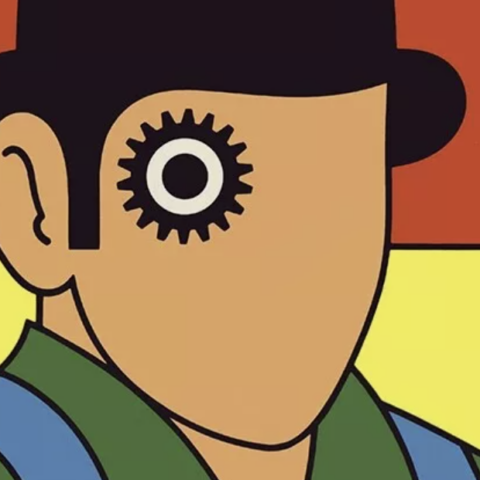Open-ended; Films We Love But Do They Leave Us Lost
By Jo Phillips
Is one of the joys of a great film its completeness, the story starts and by the end, everything is nicely and neatly wrapped up. Sometimes happy, sometimes sad, but what about those movies with an open ending, one when you don’t know what going to happen, do they leave you feeling frustrated or do they leave you feeling intrigued? Wanting to know more, or even staying with you because there is not a nice pretty bow ending? What is the reason for an open-ended film? Why do directors use this device and which are the best inconclusive films? Find out more in Open-ended; Films We Love But Do They Leave Us Lost
When being wrapped up in the narrative of a great film does an inconclusive ending come off as more artistic? Are they supposed to be symbolic? Are there any good examples of an inconclusive ending being used as a storytelling device rather than a cop-out? Films as diverse as Inception and Citizen Kane, are both considered to be classics yet like many, have endings that leave us questioning almost the whole point of watching the story. Does it make for a better experience?
Hollywood loves a nicely tidy ending almost refusing ambiguous endings. Yet far more often it’s the more Arthouse cinema that provides a refusal for films to a ‘resolved’ neat-bowed conclusion.
Maybe it is in part because, in the cinematic world where stories are built around human moments, it would not be truthful or even realistic to tie up to a ‘clean’ conclusion. Simply because life, everyday struggles, and human emotions are far too complex, and situations often linger years into people’s lives. Let’s face it there are no quick fixes in the real world
Then is it possible that ambiguities in film endings can reflect a greater respect for the capacity of audiences to think, interpret and discuss an ending? That the film they have ‘experienced’ may linger longer in their consciousness and even require a second or more viewing?
Based on Bret Easton Ellis’ novel of the same name, American Psycho stars Christian Bale in one of his best roles. It follows protagonist Patrick Bateman who lives a life as a vapid yuppie while committing vicious murders behind closed doors.
Bateman’s bloody exploits include killing, chainsawing and a gunfight with the police. However, the ending makes it seem like the earlier killings occurred inside Bateman’s head only and not in real life. The ending is deliberately on an ambiguous note.
Now for slightly more surreal films then Charlie Kaufman is your man. His directorial debut Synecdoche, New York is a Russian nesting doll of stories within stories within stories.
It follows Caden Cotard, a playwright as he attempts to create his masterpiece, a play about himself, featuring an actor playing him, the writer, an actor playing an actor who plays him, the writer, an actor playing the actor playing the actor… confused? A truly ambitious and perplexing work. Kaufman crafts layers upon layers as Caden’s life falls apart, all providing inspiration for his play, which eventually becomes his entire life.
A character, completely obsessed with finding meaning in the most meaningless aspects of existence. Whether he succeeds or fails is up to the audience’s interpretation of not just the movie, but of life itself.
Now for an absolute classic, famous for a spectacular car chase of the rough streets of 1970s New York, The French Connection
A cop and robbers thriller that drives at breakneck speed. Cop Popeye chases his target, using the depths of his obsession to get his man. Famous for its extended car chase sequence, the ending confronts audiences with its grim reveal of the darkness in Popeye’s soul.
Throwing police ethics out the window, Popeye coldly shoots the wrong person before rushing into another room, chasing what he is absolutely sure is his villain. The camera does not follow him, rather a single gunshot rings out and neither Popeye nor his enemy are to be found.
Lost in Translation brings a beautiful and profound performance from Bill Murray as Bob Harris an actor in Japan to make a whisky advert, and the almost accidental relationship that he strikes up with Scarlett Johansson’s Charlotte, travelling with her working boyfriend. The whole picturesque film is a beauty. But it’s the final scene which holds a secret message, whispered from him to her, that leaves a question in viewer’s mind.
Apparently, the last part was improvised by Murray during their parting scene. These final lines are a whisper from Bob filled with meaning only meant for the two characters to know, yet opens up the possibility for it to continue after the rolling end credits. If nothing else the film leaves those enjoying it, knowing the brief relationship between the two characters has changed for them both forever.
Possibly the masters of open-ended films are the Coen Brothers. These non-commital endings are present in No Country for Old Men, Barton Fink, Raising Arizona and most probably the best being A Serious Man.
This genius 2009 black comedy-drama is considered to be the most personal of creations by the pair. Actor Michael Stuhlbarg plays Larry Gopnik, a Minnesotan Jewish man whose life crumbles around him both professionally and personally, leading him to question his faith.
As his life falls apart Larry looks to the religious leaders in his life to help, for consolation and help him make sense of what is happening, but even here he is ignored or misunderstood.
Blending dark humour with profoundly personal themes, the leading character tormented by his failures, family and work miseries that befall him, becomes almost a symbolic representation of the biblical Book of Job
With all the trauma, Larry seemingly suffers all the way through the film he seems to ask, ‘What have I done to deserve this’?
And it is this biblical tale underlying the story that brings an uncertain chillly ending to the film. An apocalyptic storm arrives alongside, a phone call to the rather sappy Larry, from his doctor, regarding recent medical tests…
Next comes a seminal French New Wave film that offers an honest, sympathetic, and wholly heartbreaking observation of adolescence without trite nostalgia. Thought to be based loosely on the filmmaker’s life 400 Blows by Francois Truffaut is still considered one of the most important films ever made.
Antoine, the young protagonist, suffers through a life of juvenile delinquency, family problems, and issues at school before he runs away, in one of cinema’s most famous long takes. After ending up in a correctional school he manages to escape and make it to the seaside, somewhere he has always wanted to go.
Yet again it is the lingering gaze straight to camera, right at the end that leaves the audience with a question. As Antooine runs along the beach toward the ocean, he turns and looks directly into the camera and then the frame freezes on his face before fading to black.
So what does this freeze frame represent, freedom or imprisonment? Life or death? Truffaut once remarked that the freeze frame was an accident, that actor Jean-Pierre Léaud simply didn’t look into the camera for long enough. However, the stasis of the freeze frame offers radically different conclusions for the audience.
And as a final option with an ambiguous ending, and one ripe with metaphors, allusions and symbolism, is Stanley Kubrick and Arthur C. Clarke’s genius 2001: A Space Odyssey
So what’s up with the floating fetus, the black slab, and the rapidly ageing astronaut in this celluloid masterpiece? Starting before the dawn of man, monkeys after seeing a mysterious monolith learn to fight over territories. Followed by a futuristic part of the film that deals with another monolith found on the moon. The final part deals with a space trip to Jupiter with two crew members and an intelligent, speaking supercomputer HAL 9000 that controls the spaceship.
It ends, after much in the ways of visually stunning yet confusing scenes, with ‘Dave’ the astronaut watching himself rapidly age into an older, bedridden man. He then reaches out to a monolith that transforms him into a glowing fetus floating in space above Earth. Even after being made over 50 years ago many still discuss, celebrate, and debate this ending.
From the mystery of the monolith to the visually mind-boggling to the cerebrally challenging space baby, Kubrick help up a mirror to his audience, reflecting back whatever they were willing to bring to the film and turning humanity’s eyes back in on itself.
Multiple viewings offer no further clarity as the film defies definition and seems to mean something different every time, but the power of Kubrick’s cinematic space epic has not faded with age. It’s unlikely anyone will ever really figure it out but the movie stands on its own terms, tall as the monolithic giant within with its ambiguity and fascination.
So, no the camera did not just run out of film, or the production run out of money. Humans love closure, often feeling a need for everything in the world to make sense or offer resolution. Telling stories is one of the ways we pass on information and create catharsis, learning from the successes and failures of others and the movies are the leanest and meanest form of storytelling.
Occasionally, creators don’t try to make a conclusive or coherent ending. Instead, some filmmakers attempt to convey large ideas or symbols. Yes, it does require a certain effort but go for the open-end and be sure of having a long-term form of cinematic entertainment.



